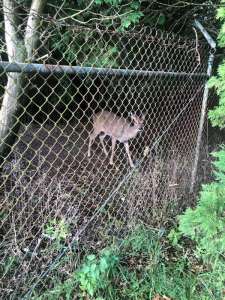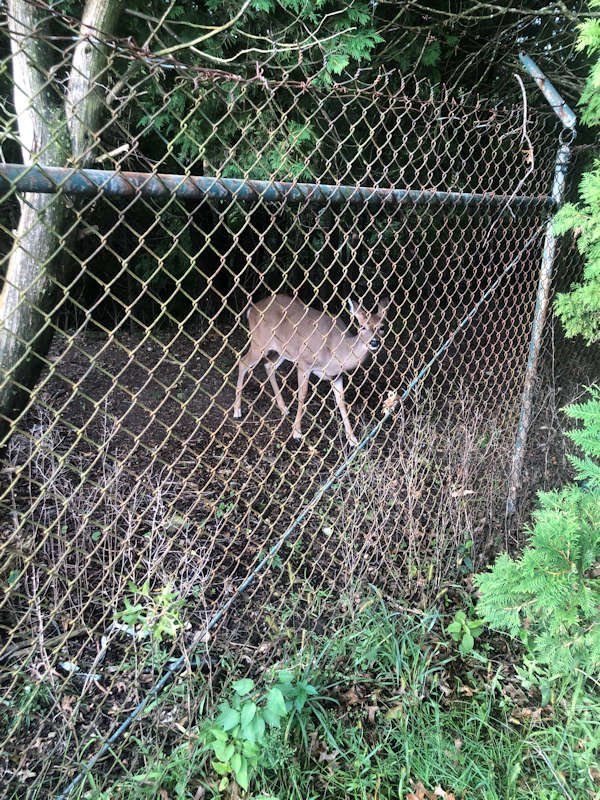Unusual but not unexpected, says DEC

Late this summer, Elissa Nuñez of Westbury spotted a deer in the sump by Parkway Drive in Westbury, north of the Northern Parkway.
Her father Alex, an employee of Anton Media Group, asked Westbury Mayor Peter Cavallaro about the sighting and he responded, “Yes, for the past few years, a family of deer has lived in that sump and a few others have been seen along the parkways a few times. I’ve also heard of fox sightings recently, and it won’t be long before coyotes are on Long Island, according to some wildlife people.”
The Westbury Times reached out to the state Department of Environmental Conservation (DEC) for comment, and a DEC spokesperson replied:
“Since the 1980s, Long Island’s deer population has increased. The growth is evident in annual buck-sighting rates and harvest numbers reported by hunters. The deer population is growing throughout eastern Suffolk County and deer have expanded their range and increased in number in western Suffolk and Nassau counties. Seeing deer as far west as Westbury is unusual but not unexpected. Deer are more common on Nassau County’s north shore than the south shore as it has more woods and larger properties. However, deer have been moving westward.”
White-tailed deer, once concentrated in eastern Suffolk County, have an easier time meandering west, with no rivers to cross. They are also moving south from the counties north of the city and have been seen in the Bronx.
In 2019, according to DEC statistics, hunters harvested 1,614 bucks and 4,036 total deer in Suffolk County, more than in many rural upstate counties. In the Town of Huntington, right next to Nassau County, the respective totals were 115 and 224.
Though people may enjoy spotting wildlife, there is a downside to spreading deer populations. Collisions with vehicles may increase, as well as the danger of Lyme Disease caused by deer ticks.
The forested northeast was once home to much wildlife, including wolves and mountain lions, hunted to extinction. Humans are relatively new interlopers.
Coyotes have spread from their midwest origins to take over the territory once patrolled by their cousins, the wolves. They’ve recently been spotted in Central Park, making the journey from rural areas north of the city.
A dead bear cub was found in Central Park in 2014, and bears are plentiful in north Jersey, a short swim across the Hudson, Even alligators, exotic pets unwisely released by their owners, are showing up in parts of the city, with one reported on Long Island (no location given).
—Alex Nuñez contributed to this story.


































